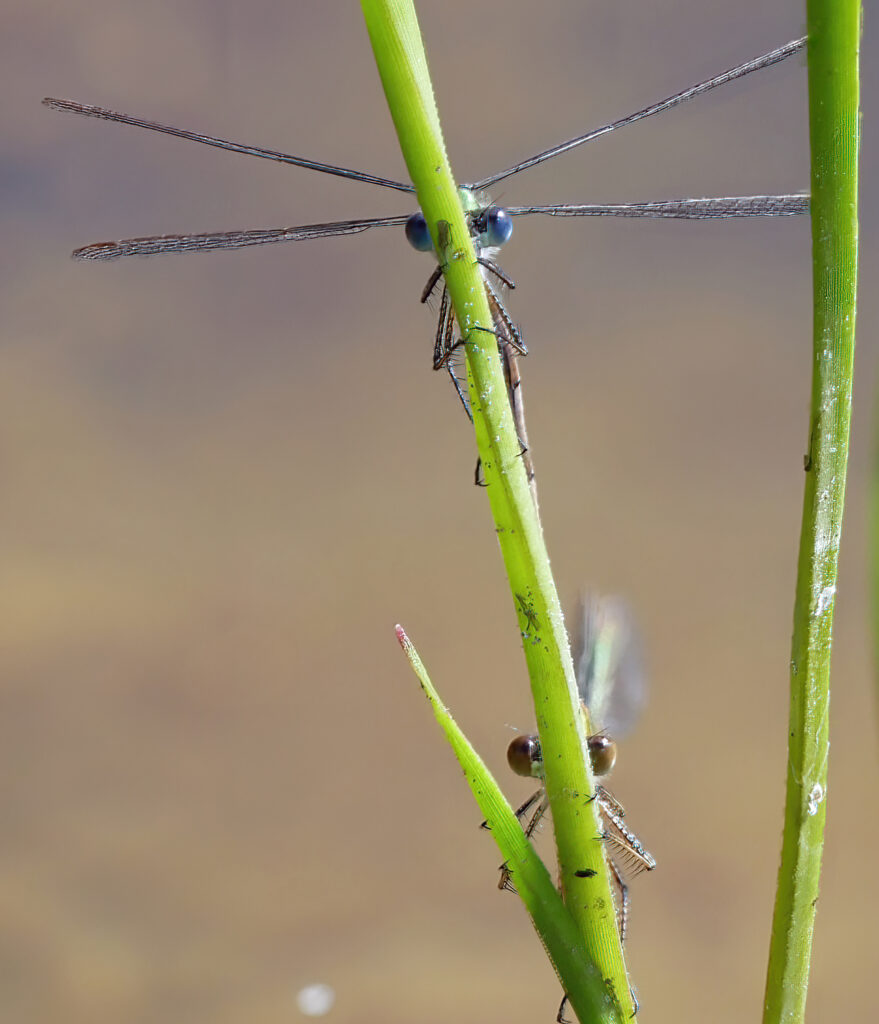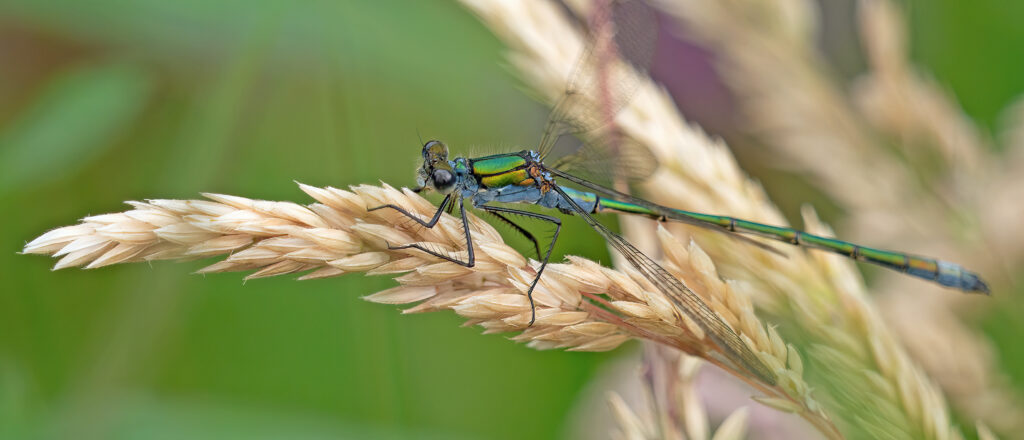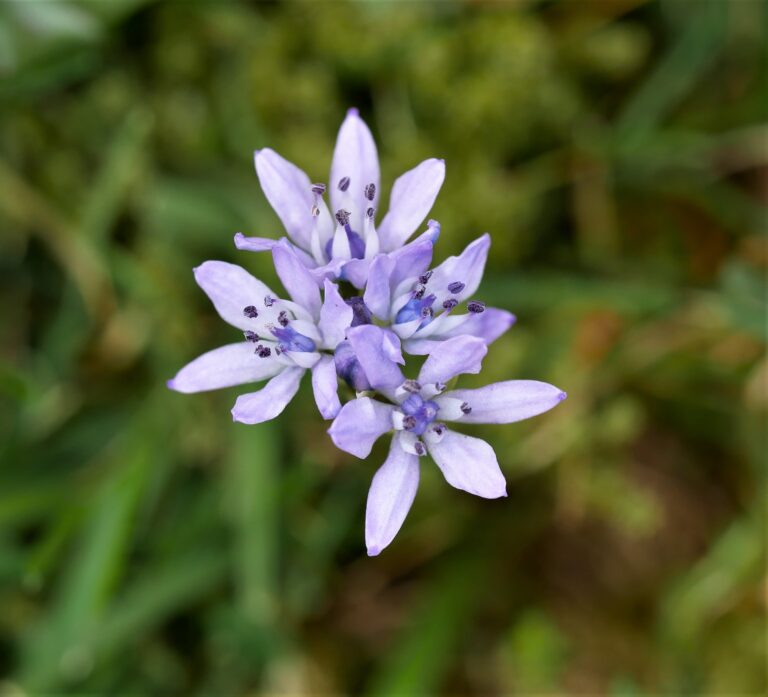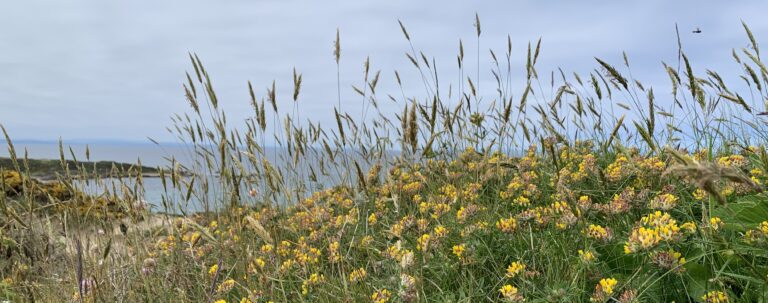By Stephen Kirkup.
Emerald damselfly
(Lestes sponsa)
Gaelic: Cruinneag Uaine
Where to look
A common species in the UK, they can be seen throughout our region both in upland and lowland areas. They favour smaller, shallower bodies of still water that are well vegetated.
When to look
The numbers of adults peak in late summer, so August is a good month for spotting these beautiful small damselflies. Although only 35-39mm in total length, they are well worth getting up close to, their largely metallic green bodies are attractive, sparkling jewels in the summer sun.
Life cycle
The female adults insert their eggs into the stems of emergent pond plants. The female often starting above water and lowering herself until sometimes completely submerged. The eggs overwinter and then in the following spring the larvae (or nymph) emerges to live beneath the water surface. Many species of dragonfly/damselfly larvae can take one to two years to develop (even five years in the case of golden-ringed dragonfly), moulting many times before emerging from the water to become the familiar flying adult. However, emerald damselflies have a very short period as larvae, usually just two to three months. They are active and ferocious predators and grow rapidly, passing through a number of larval stages before emerging as adults during June, July and August.
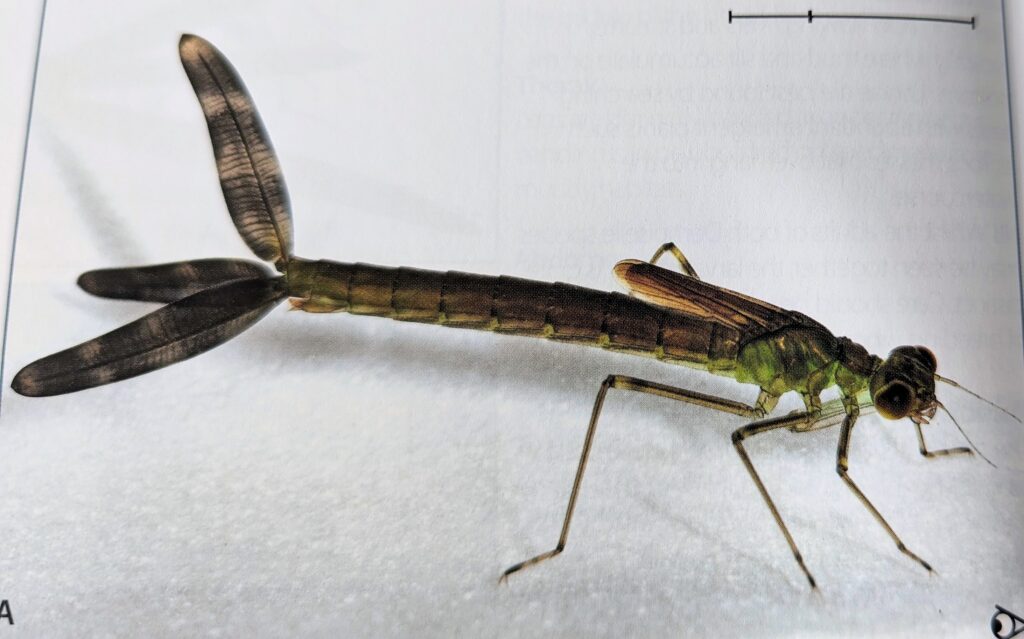
Courtesy of the ‘Field Guide to the larvae & exuviae of British dragonflies’ by Steve Cham ©
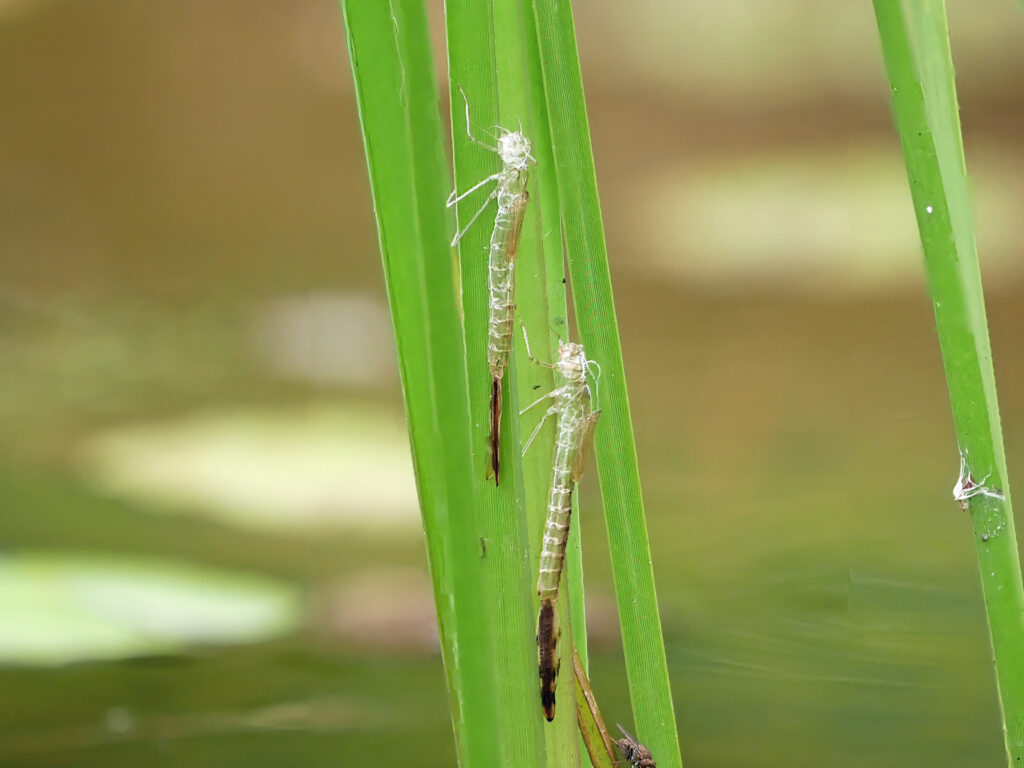
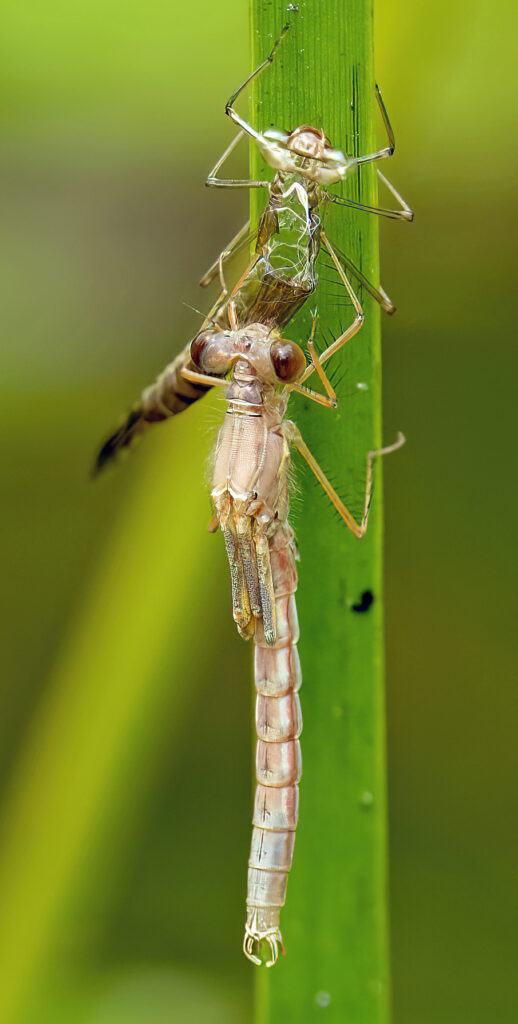
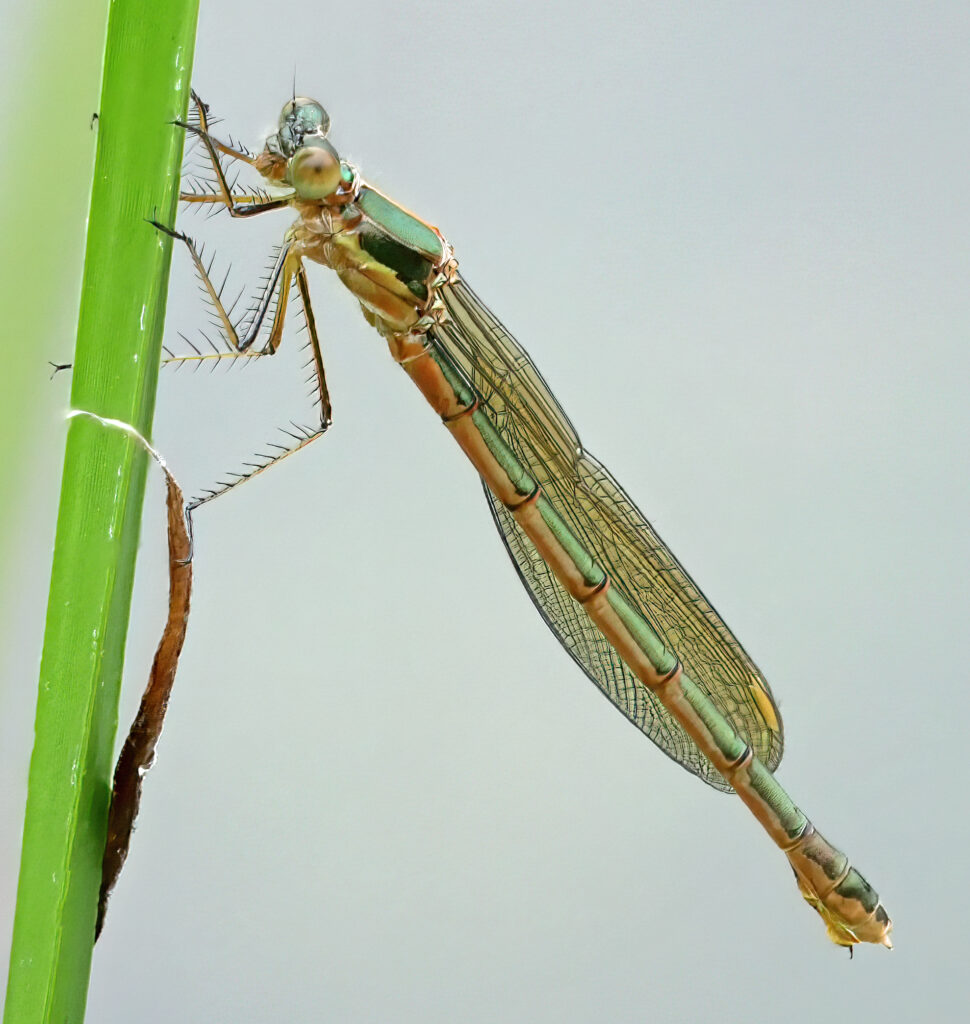
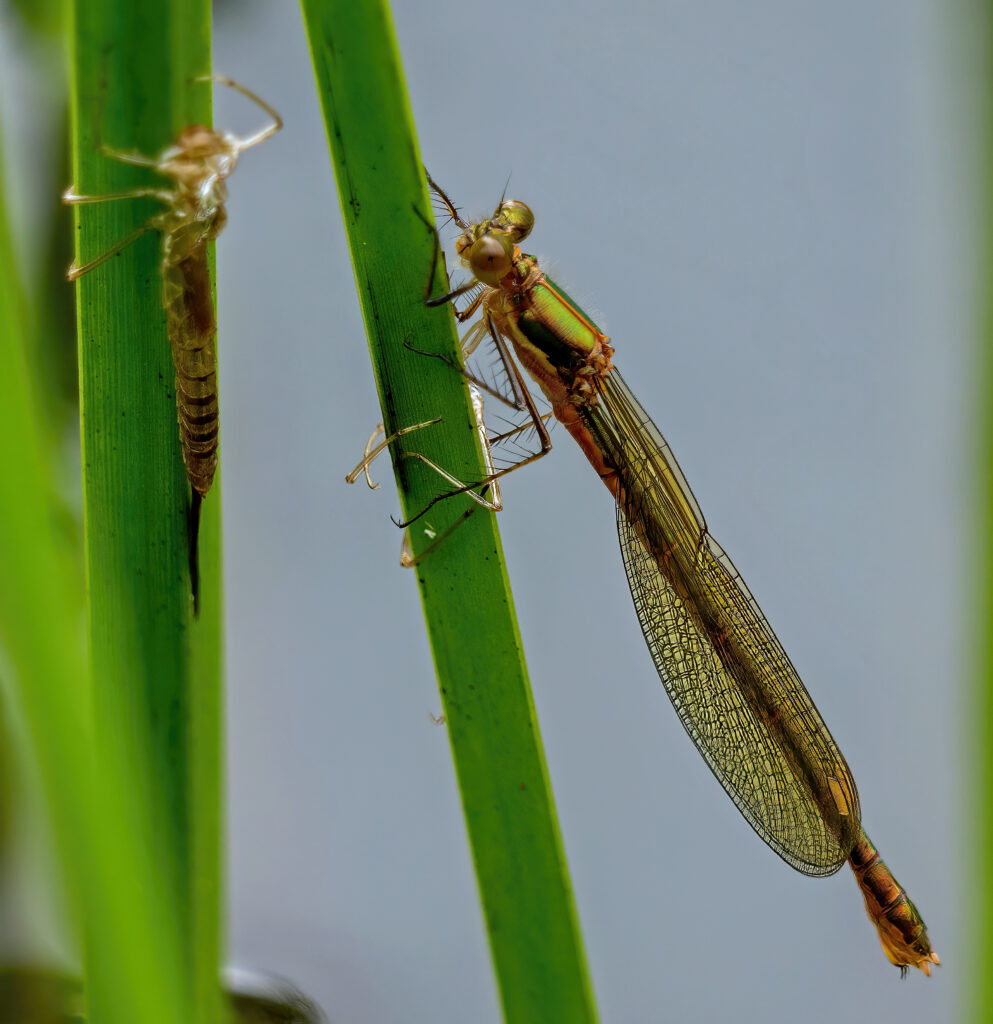

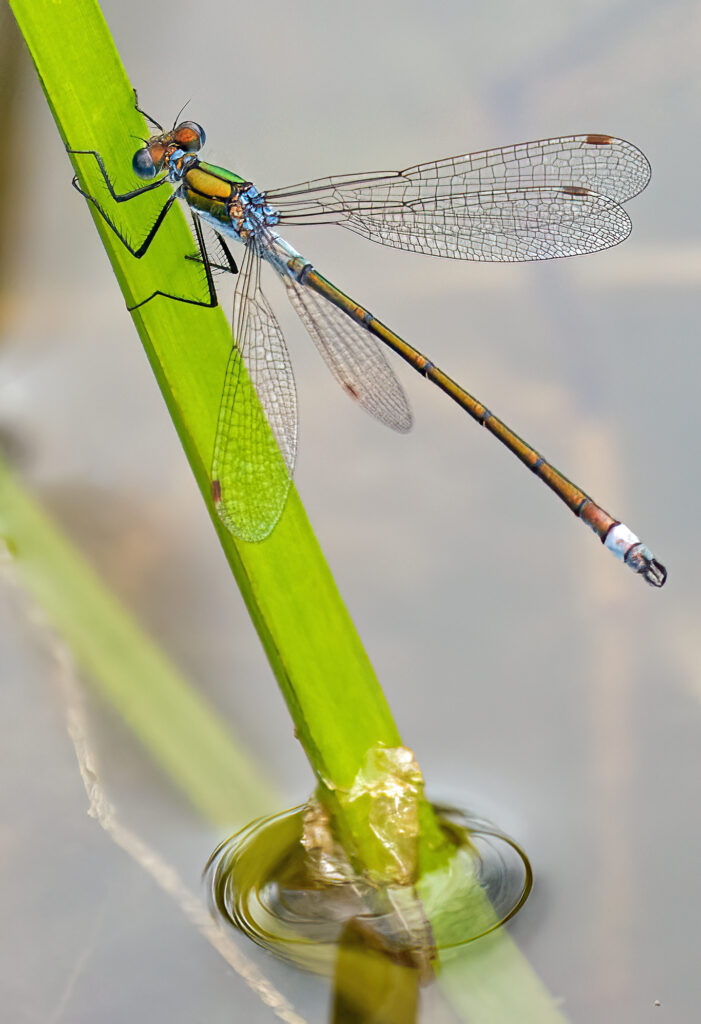
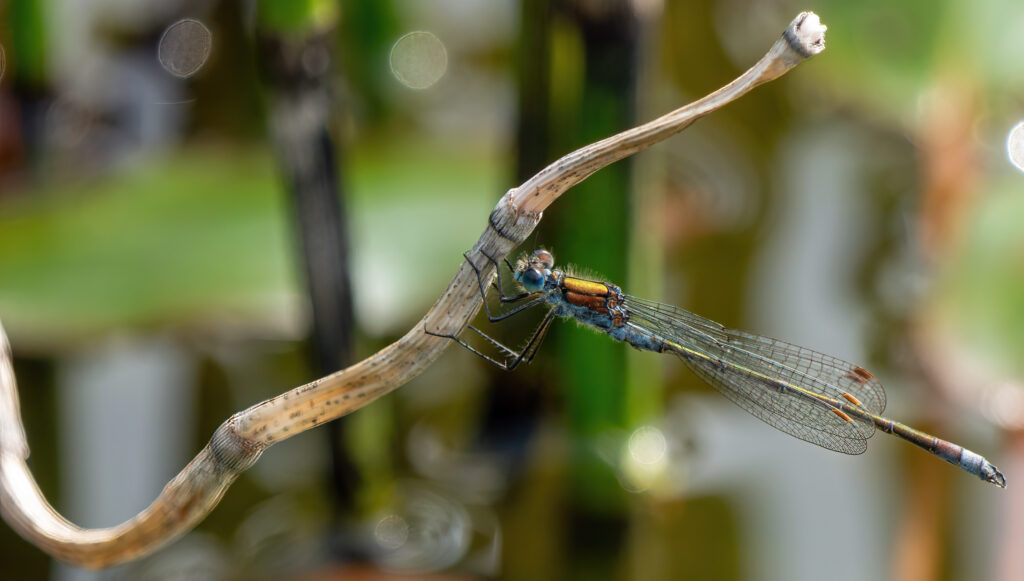
During summer adults mate and lay eggs.
Mating in dragonflies and damselflies is unique. The male grasps a female by the neck using claspers at the tip of his abdomen. The female curls the tip of of her abdomen up to the male for sperm to be transferred. In emerald damselflies, the male and female will stay in this configuration (often known as ‘the wheel’) throughout egg laying, thereby stopping any attention from other males.


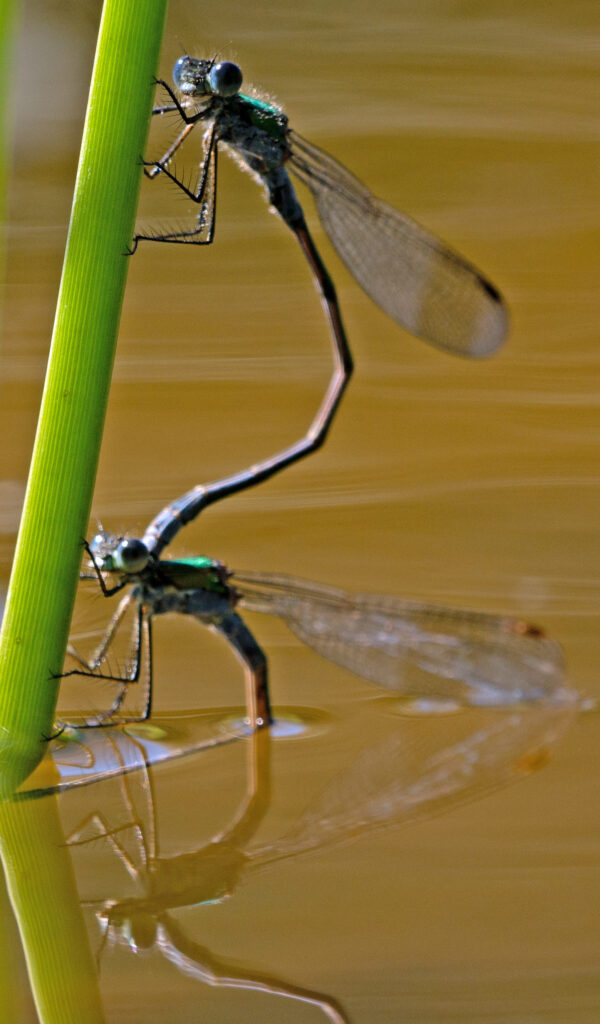
All images* and videos by Susan Kirkup and Stephen Kirkup ©
(*Emerald damselfly nymph Courtesy of the ‘Field Guide to the larvae & exuviae of British dragonflies’ by Steve Cham ©)


